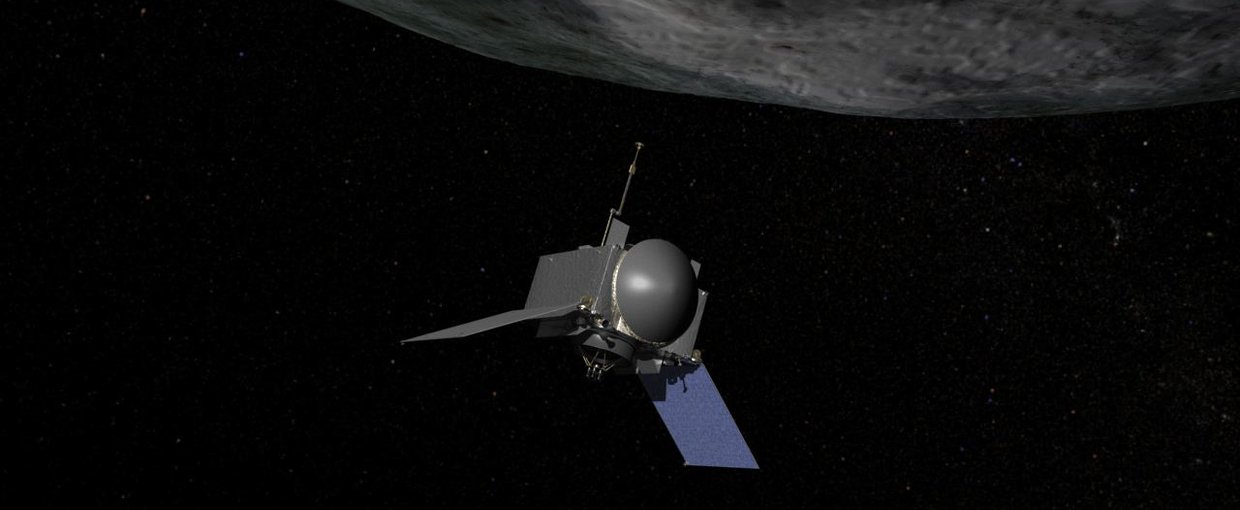
Sept. 14, 2018
Research Highlight
Studying the Origins of Antarctic Micrometeorites
Recent study could have application in studying samples returned to Earth.

Artist’s concept of NASA’s OSIRIS-REx spacecraft preparing to take a sample from asteroid Bennu.Image credit: NASA/Goddard/Chris Meaney.
A recent study provides new insight into the origins of fine-grained Antarctic micrometeorites (AMMs). Previous research has identified isotopic anomalies of elements in meteorites and AMMs. For some elements, the anomalies can be accounted for by the presence of presolar inorganic grains. However, the origins of isotopic anomalies in Nitrogen (N) and Hydrogen (H) are unclear. The study focused on analyzing N-rich organic matter in AMMs, and the procedures developed for the work could prove useful in future studies of materials returned to Earth by OSIRIX-REx and the Japanese Hyabusa mission.
The study, “Low-Voltage Transmission Electron Microscopy Analysis of 15N-Rich Organic Matter: Insight into the Origins of Fine-Grained Antarctic Micrometeorites,” was published in the journal Microscopy and Microanalysis. The work was supported by the Nexus for Exoplanet System Science (NExSS). NExSS is a NASA research coordination network supported in part by the NASA Astrobiology Program. This program element is shared between NASA’s Planetary Science Division (PSD) and the Astrophysics Division.